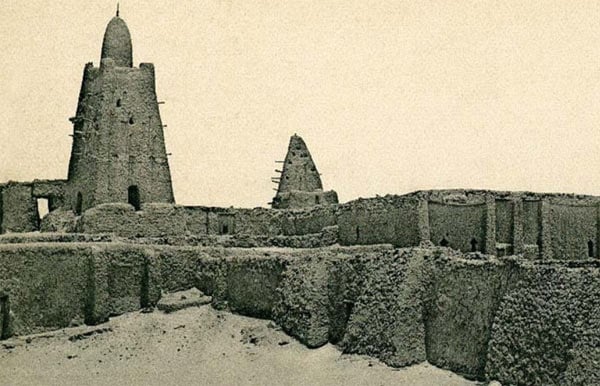Restoring and Rebuilding the Cultural Heritage of Timbuktu
Timbuktu is a town in the West African nation of Mali on the southern edge of the Sahara Desert. It was once an intellectual and spiritual capital and a centre for the propagation of Islam throughout Africa in the 15th and 16th centuries and is now listed as a UNESCO World Heritage Site. However, the town suffered extensive damage following the systematic attacks by the rebel forces that occupied the region until early this year. Now, the Government of Mali and UNESCO have begun work to restore the monuments and mausoleums of Timbuktu.
Founded in the 5th century, the economic and cultural apogee of Timbuktu came about during the15th and 16th centuries. It was an important centre for the diffusion of Islamic culture with the University of Sankore, with 180 Koranic schools and 25,000 students. It was also a crossroads and an important market place where the trading of manuscripts was negotiated, and salt from Teghaza in the north, gold was sold, and cattle and grain from the south.
However, in a devastating blow to world heritage, Islamist rebels seized much of northern Mali, including Timbuktu, after a military coup in the capital Bamako, destroying ancient buildings and setting fire to a library containing thousands of priceless historic manuscripts
A team of experts from UNESCO and Mali travelled to the fabled city June and found that damage to Timbuktu’s cultural heritage was more extensive than first estimated.
“The destruction caused to Timbuktu’s heritage is even more alarming than we thought,” said Lazare Eloundou Assomo of UNESCO’s World Heritage Centre, who led the mission. “We discovered that 14 of Timbuktu’s mausoleums, including those that are part of the UNESCO World Heritage sites, were totally destroyed, along with two others at the Djingareyber Mosque. The emblematic El Farouk monument at the entrance to the city was razed. We estimate that 4,203 manuscripts from the Ahmed Baba research centre were lost, and that another 300,000 were exfiltrated - mainly to Bamako – and are in urgent need of conservation.”
In a more positive move, work has now begun on repairing and rebuilding Timbuktu’s cultural heritage. The Djingareyber Mosque in Timbuktu has already received a new façade and a series of architectural studies were started and costs estimated for the reconstruction and rehabilitation of other damaged cultural property in the city.
The work on the mosque is one of a range of activities to rehabilitate all of the destroyed mausoleums, the El Farouk monument, the Ahmed Baba Manuscript Centre and other cultural property and intangible cultural heritage. Local communities are being closely associated with all phases of this work.
The start of repairs and reconstruction is of great symbolic importance for the people of Timbuktu, marking the end of a period characterized by the destruction of city’s monuments and manuscripts, and the prohibition of cultural practices and expressions.



















